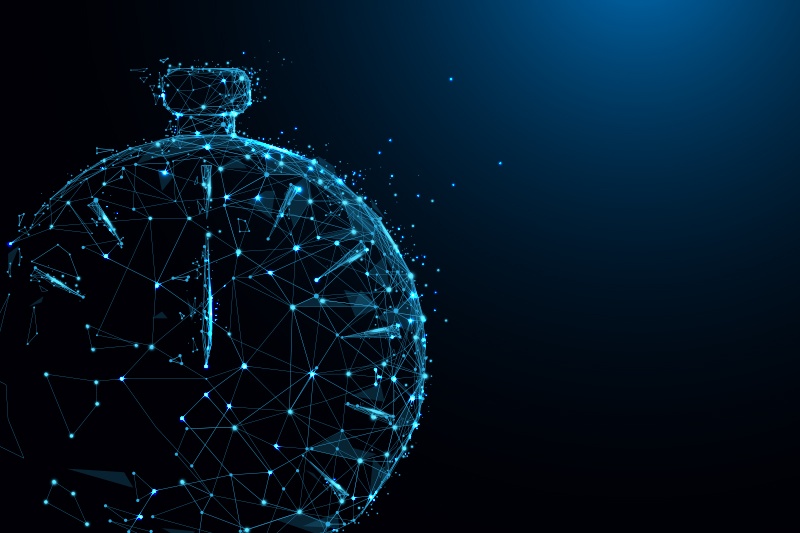28 Sep 2018
In the patent world, the boundaries of what is considered prior art can be fuzzy and dynamic.
The recent case of Helsinn Healthcare SA v. Teva Pharmaceuticals USA Inc illustrates this. Helsinnasks, simply, whether secret sales should count as prior art under the America Invents Act (AIA).
According to the USPTO, they don’t — but the issue hadn’t yet been addressed by the courts when the USPTO issued their guidelines. And last year, the Federal Circuit finally ruled that they do, contradicting the USPTO’s guidelines.
With the case now headed to the Supreme Court, the patent community may finally get some long-overdue clarity on how to approach secret sales in the post-AIA era.
HOW HAS THE AIA CHANGED THE WAY WE VIEW SECRET SALES AND PRIOR ART?
Pre-AIA, prior art included inventions that have been “in public use or on sale in this country, more than one year prior to the date of the application for patent in the United States.”
But under Section 102 of the AIA, the statute has been reworded to include inventions that have been “in public use, on sale, or otherwise available to the public before the effective filing date of the claimed invention.”

HOW HAS THIS CHANGED THE WAY WE VIEW SECRET SALES?
Essentially, the key issue at stake in Helsinn is whether (and to what extent) the AIA changed the scope of the on-sale bar.
WHAT IS THE ON-SALE BAR?
The on-sale bar refers to the fact that, under U.S. law, a commercial sale that took place more than a year before filing a patent application will count as prior art. It’s meant to prevent companies from pursuing patent protection only after realizing the invention’s commercial value.
WHERE DO SECRET SALES COME IN?
Pre-AIA, it was generally understood that “secret sales” would start the clock for the one-year grace period to file a patent application. In other words, a “sale” of the invention doesn’t have to be public for the sale to count as prior art.
For example, if I invent a new widget, and confidentially sell that widget to just one person, the new widget will be unpatentable after one year.
The language of the AIA seemed to change this — specifically because of the added clause, “or otherwise available to the public.”
As a result, it seemed (to some, at least) that under the AIA, a “secret sale” of the invention would not start the one-year clock. In other words, only public sales would count as prior art.
Congress and the USPTO have further supported this conclusion:
- The AIA’s lead sponsors in Congress (Sen. Patrick Leahy, D-Vt., and Rep. Lamar Smith, R-Texas) have said that they intended to make this change.
- The USPTO itself has interpreted the AIA as making this change. As the MPEP states, “The ‘or otherwise available to the public’ residual clause… indicates that AIA 35 U.S.C. 102(a)(1) does not cover secret sales or offers for sale.”
But prior to 2017, the courts had yet to weigh in on the matter. Because the wording of Section 102 is a little ambiguous, people have wondered out loud for the past seven years how the courts would interpret the statute.
HELSINN HEALTHCARE SA V. TEVA PHARMACEUTICALS USA INC: HOW THE FEDERAL CIRCUIT INTERPRETED THE AIA
In Helsinn Healthcare SA v. Teva Pharmaceuticals USA Inc, the Federal Circuit ruled on the issue for the very first time. It decided that the AIA did not change the law: Secret sales still count as prior art.
In February 2017, Helsinn accused Teva of infringing their patent for Aloxi®, a drug used to treat nausea caused by chemotherapy. Teva had been trying to sell a generic version of Aloxi®.
But notably, more than a year before the date of Helsinn’s priority patent application for Aloxi®, Helsinn had entered a written agreement to license the drug to another company, MGI Pharma. The agreement itself was publicly disclosed, but the details of the invention remained confidential.
So in May 2017, the Federal Circuit invalidated Helsinn’s patent claims — ruling that the on-sale bar can be triggered even in the case of a confidential sale.
RESPONSES TO THE FEDERAL CIRCUIT’S DECISION
Unsurprisingly, Helsinn is challenging the Federal Circuit’s decision. Because the AIA law states “otherwise available to the public,” Helsinn is arguing that only public sales should count — which would be in line with the interpretations from members of Congress and the USPTO. And because the license agreement kept the details of the invention confidential, Helsinn’s agreement doesn’t count as a public sale.
The Federal Circuit disagrees: Keeping the details confidential is irrelevant. As long as the sale puts the invention “in the hands of the public,” it should count as a public sale.
The Supreme Court has granted certiorari, and will review this case next term.
WHAT SHOULD WE DO WHILE AWAITING THE SUPREME COURT’S DECISION?
For now, it’s best to assume that secret sales qualify as prior art under Section 102, and start the one-year clock accordingly.
If you haven’t filed patent applications yet but want to provide units to customers, try to structure your transaction in a way that avoids classifying anything as a “sale.” For example, could you characterize the transaction as an experimental test?
The on-sale bar might certainly change following the Supreme Court’s review. But for now, the law of the land remains the pre-AIA status quo.
We’re expecting a decision from SCOTUS by mid-summer 2019 — and will keep you updated on what happens.
UPDATE (February 2019): SCOTUS has decided that the AIA did not change the on-sale bar for secret sales.
STAY IN THE LOOP: RECENT CHANGES IN THE U.S. PATENT SYSTEM
In the past decade, SCOTUS has issued more landmark decisions for patent cases than in several previous decades combined.
Keep up with the latest changes with our FREE infographic, “Recent Changes in the U.S. Patent System” — which also outlines how these changes might impact high-tech startups. Download it now!
OBTAINING AND ENFORCING PATENTS ISN’T AS SIMPLE AS IT USED TO BE.
We’ve seen more landmark changes to the U.S. patent system in the past 10 years than in several previous decades combined.
Have these changes affected your business? Maybe more than you know!
The U.S. Supreme Court, Congress, and the Patent Office have all played a role in these shifts.
In this FREE infographic, you’ll get a snapshot of:
- New statutes that changed the role of patents in IP protection
- Key USPTO initiatives that affect patent prosecution and litigation
- Landmark U.S. Supreme Court cases influencing patentability
Fill out the short form on this page to get the infographic now.
GET THE INFOGRAPHIC

Michael K. Henry, Ph.D.
Michael K. Henry, Ph.D., is a principal and the firm’s founding member. He specializes in creating comprehensive, growth-oriented IP strategies for early-stage tech companies.

